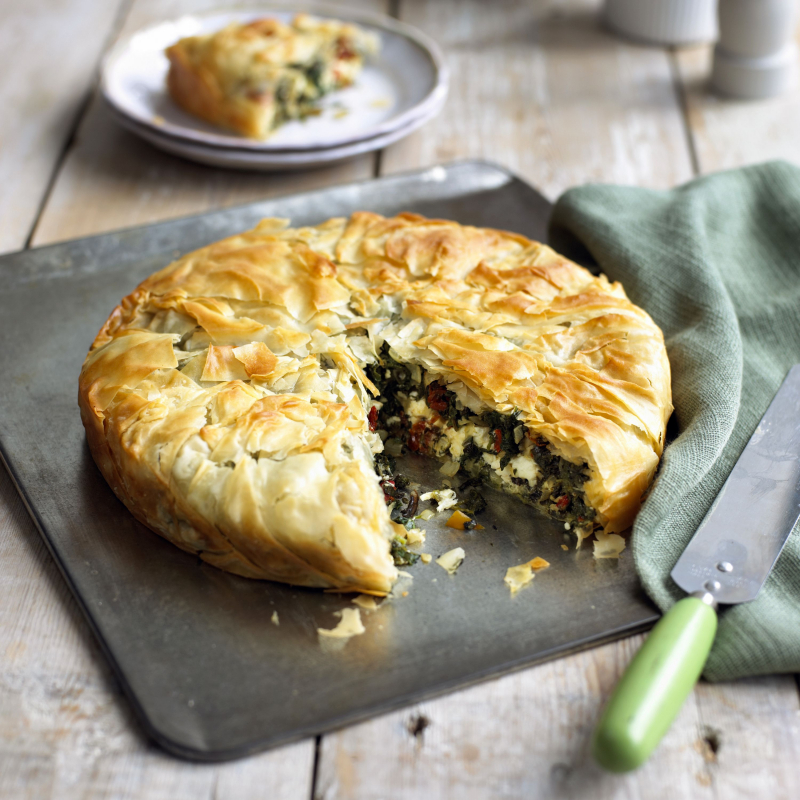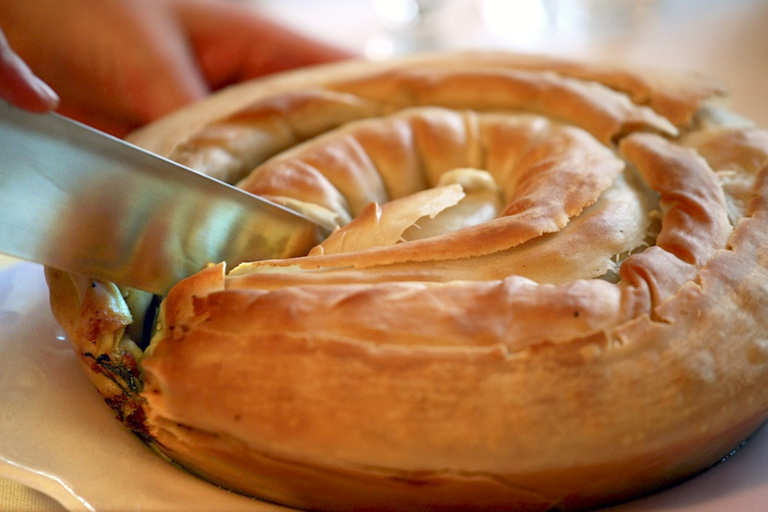Zelnik – Filo / Phyllo Stuffed Pie
The name "zelnik" comes from the word "zelje," which means cabbage, and plainly refers to the major element of this delectable pastry. Traditionally, zelnik is a cabbage or spinach filo pie similar to burek, another delectable dessert prevalent in Turkey, Central Asia, and most Slavic nations, although there is no proof as to which came first. The fundamental distinction between zelnik and burek is in the crust and layers; zelnik always has thinner layers and crust and is typically prepared for holidays or special events. Zelnik is also typically filled with cabbage or spinach, as opposed to burek, which is typically filled with minced pork or white cheese.
In recent years, there have been more versions available, such as fillings with cheese, eggs, minced beef, leeks, sorrel, or even rice. This zelnik recipe, on the other hand, explains the traditional method of making this delectable pastry (with cabbage or spinach). Zelnik is typically served hot with a glass of yogurt, ayran, or kefir. It's typically eaten for breakfast or as a small meal.
Ingredients
- 700 Grams White Flour, 1 Tablespoon Salt, 3 Tablespoons Oil, 250 Grams of Butter or Margarine, 2 Eggs (beaten). 1 Cup of Water, 1 Teaspoon Vinegar, 250 Grams of White Cheese, ½ kg of Cabbage or Spinach, 2 Leeks (optional), 2 Eggs (beaten), 1 Tablespoon Salt , 1 Teaspoon Black Pepper
Instructions
- To begin, sift the flour into a large bowl and make a well in the centre. Add the vinegar, salt, oil and half of the water and mix together with a fork until it starts to come together. Add as much of the remaining water as you need to make a dough and turn it out onto a lightly floured work surface
- Knead for a few minutes until you have a soft, but not sticky dough. Wrap in cling film and leave to rest for at least 20 minutes
- In the meantime, make the filling. In a pan over a medium heat, sweat the onion, leeks, garlic and bacon in a little oil (or butter) until soft and slightly golden. Stir in the feta and parsley and season generously. Transfer to a bowl and leave to cool
- Use your hands to roll the dough into a sausage and cut into 10 pieces. Take a piece of dough and cover the remaining 9 pieces with cling film to prevent them from drying out
- Roll the dough as thinly as you possibly can into a large rectangular shape, then gently stretch it further using your hands. Ideally the dough should be thin enough to be able to see your hand through it
- Once the dough is as thin as you can make it, brush the filo sheet with melted butter/oil and cover with cling film. Roll out the next piece in the same way, remove the cling film from the first sheet and place the second over the top
- Brush liberally with more melted butter and place the sheet of cling film back on. Continue until all the dough has been rolled and brushed with melted butter, giving you 10 layers
- Preheat the oven to 220°C/gas mark 7
- Place the layered filo in front of you, horizontally, and trim off the edges of the pastry to make a neat rectangle. Spoon the filling into a line a few inches in from the edge of the filo closest to you. Now for the fun bit!
- Roll the whole thing up tightly into a long sausage and, with the seam underneath, coil the sausage into a tight ring.
- Butter a round ovenproof dish, big enough for the pie to snugly fit into the dish. Use a couple of fish slices, or any other long flat implement to hand, to carefully transfer the pie to the dish
- Brush the top of the pie with more melted butter and sprinkle over a little salt and pepper. Place the pie in the oven and bake for 20 minutes
- Reduce the oven temperature to 180°C and continue to bake for another 20 minutes. Leave to cool for 15–20 minutes before carefully transferring the pie to a serving plate. Slice into wedges to serve












